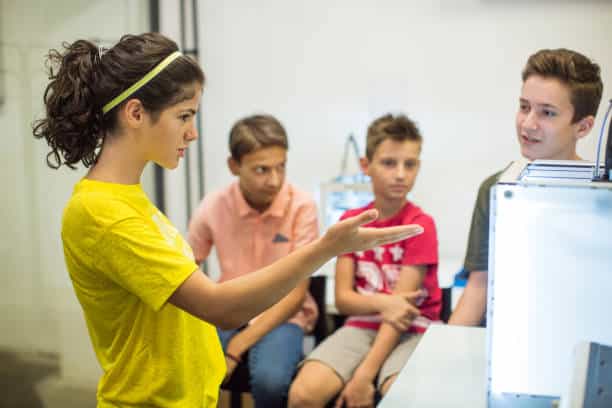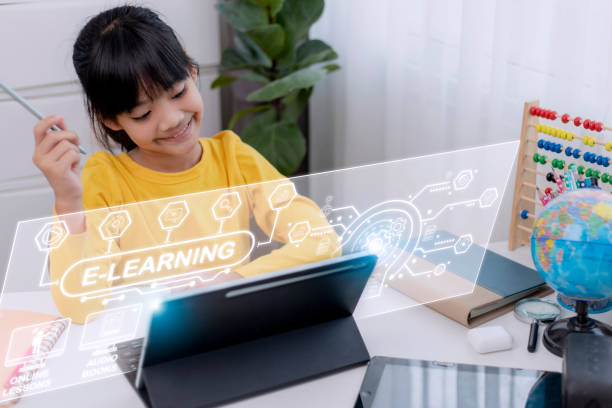In the 21st century, the educational landscape is rapidly evolving, and at the forefront of this change is human-generated consciousness (computer-based intelligence). From tailored development opportunities to information-driven experiences, computer-based intelligence is reshaping the way undergraduates learn and instructors train. In this blog entry, we’ll explore how simulated intelligence is upgrading growth opportunities and disrupting the education sector.
It’s exciting, but also a little scary, to think that AI could help students learn, help teachers, and make personalized learning work better. To try to have an intelligent discussion about human intelligence in school, we first need to get past the imaginary science fiction situations of computers and robots that we show our young people, replacing teachers and reducing the human element to what it is in general terms. person. movement.
Simulating Intelligence in School Education [Individual Learning]

There is also impressive optimism surrounding the possibility that, as human reasoning becomes a more essential part of the home, instructors will be better prepared to provide an individualized development opportunity for each understudy. AI has the potential to “enhance the abilities of human teachers to tailor lessons to each student without disrupting their classroom schedule.
” eliminating the need for educators to ‘teach in the middle’, as is often the case when their students have a range of skill levels and learning abilities, according to an article in The Atlantic titled “Artificial Intelligence Promises a Personalized Education for All.” Luckin, a teacher of learning-centred design at College School London, is quoted as saying this
“The real power of human consciousness for education is that we can use it to manipulate massive amounts of information about students, instructors, education and learning partnerships.” Finally, computer-based intelligence can “help educators understand their scholarship more precisely, more truly.”
The ultimate fate of simulated intelligence in school education
However, while the endless debate about the pros and cons of bringing AI innovation to education continues, including the depersonalization concerns and ethical considerations mentioned above, there is agreement that the extraordinary range of current and future benefits will carries the day.
1. Personalized Training Courses
The ability of artificial intelligence to design personalized learning paths for students is one of its major contributions to education. AI calculations analyze individual learning styles, inclinations, and performance information to tailor instructional content. AI-powered adaptive learning platforms can provide personalized resources, exercises and feedback to each student to ensure they progress at their own pace.
2. Systems for Intelligent Tutorials
Envision having a single mentor accessible every minute of the day. Intelligence simulation makes this a reality through intelligent instruction frameworks (ITS). These systems tailor lessons based on a student’s strengths and weaknesses using machine learning algorithms. Whether it’s math, language, or science, computer-based intelligence advisors can provide critical feedback, answer questions, and suggest additional evidence to generate ideas.
3. Driving direction information

Intelligence simulation engages trainers with important pieces of knowledge through examining information. By collecting and analyzing information about substudy performance, participation, and engagement, computer-based intelligence recognizes patterns and patterns. Instructors can come up with informed choices, for example, changing display systems, performing specified mediations, and distinguishing areas to improve the training program.
4. Mechanization of Managerial Assignments
Teachers often end up struggling with authoritative assignments that consume significant time. AI-based regulations can computerize common regulatory cycles, such as job evaluation, attendance tracking, and project oversight. This allows instructors to zero in on training and fostering a positive learning climate.
5. Improving transparency
Human intelligence plays an important role in making the school more open. AI-powered tools can offer personalized resources, such as text-to-speech capabilities, real-time language translation, and other assistive technologies, to students with varying learning needs. Every student, regardless of ability, will have equal access to educational opportunities as a result of this inclusion.
6. Gamification for engagement
Tuning elements of gamification into the growing experience has been shown to increase substudy engagement. Simulated intelligence computations can make customized gamified encounters, adjusting problem levels in view of individual progress. This makes learning more engaging as well as empowering strong competition and joint effort among understudies.
7. Persistent Acquisition and Promotion of Expertise

The requirement for continuing education is more important than ever in a rapidly changing job market. Computer-based intelligence stages can help identify the resulting abilities and give expert familiarity suggestions for the same. This proactive methodology guarantees that people remain serious and applicable in their fields.
conclusion
As we explore the information age, artificial intelligence in education is not just a mechanical advance but an extraordinary power. From appropriate examples to individual needs to robotic managerial work, artificial intelligence is upgrading opportunities for growth, making education more flexible, available and locked down. Educator collaboration and smart innovations promise a brighter, more fulfilling future for the world’s students.

